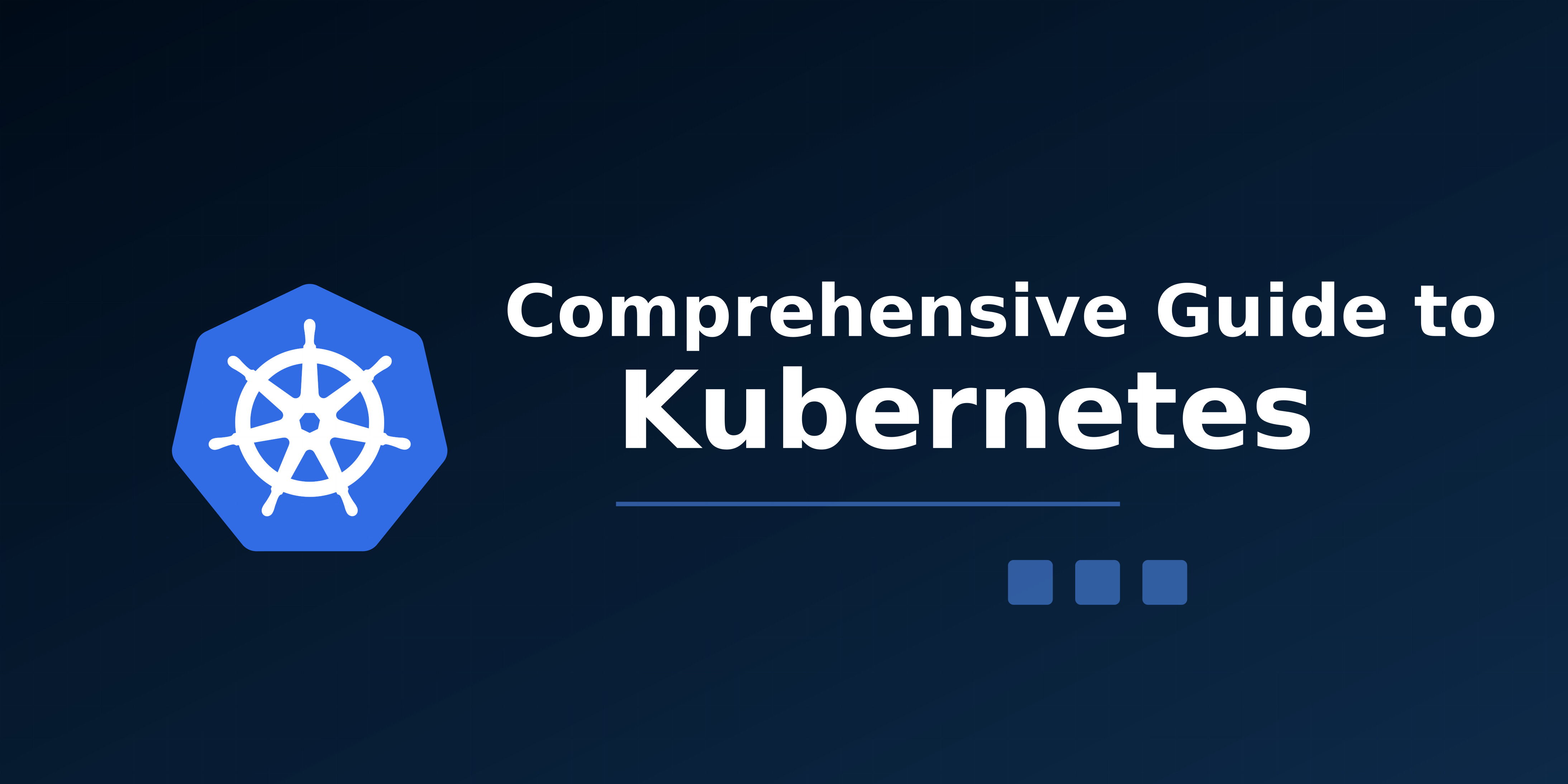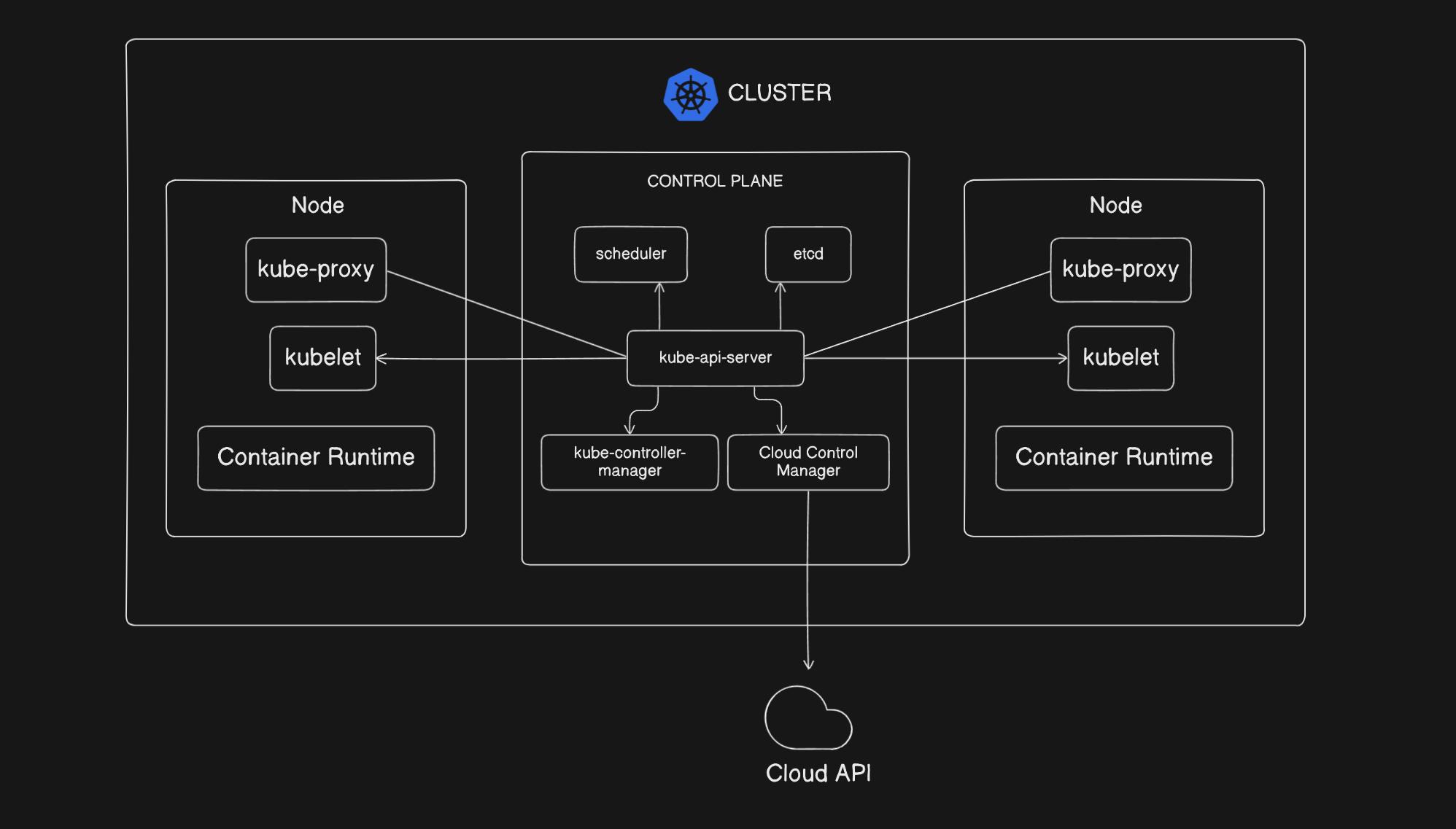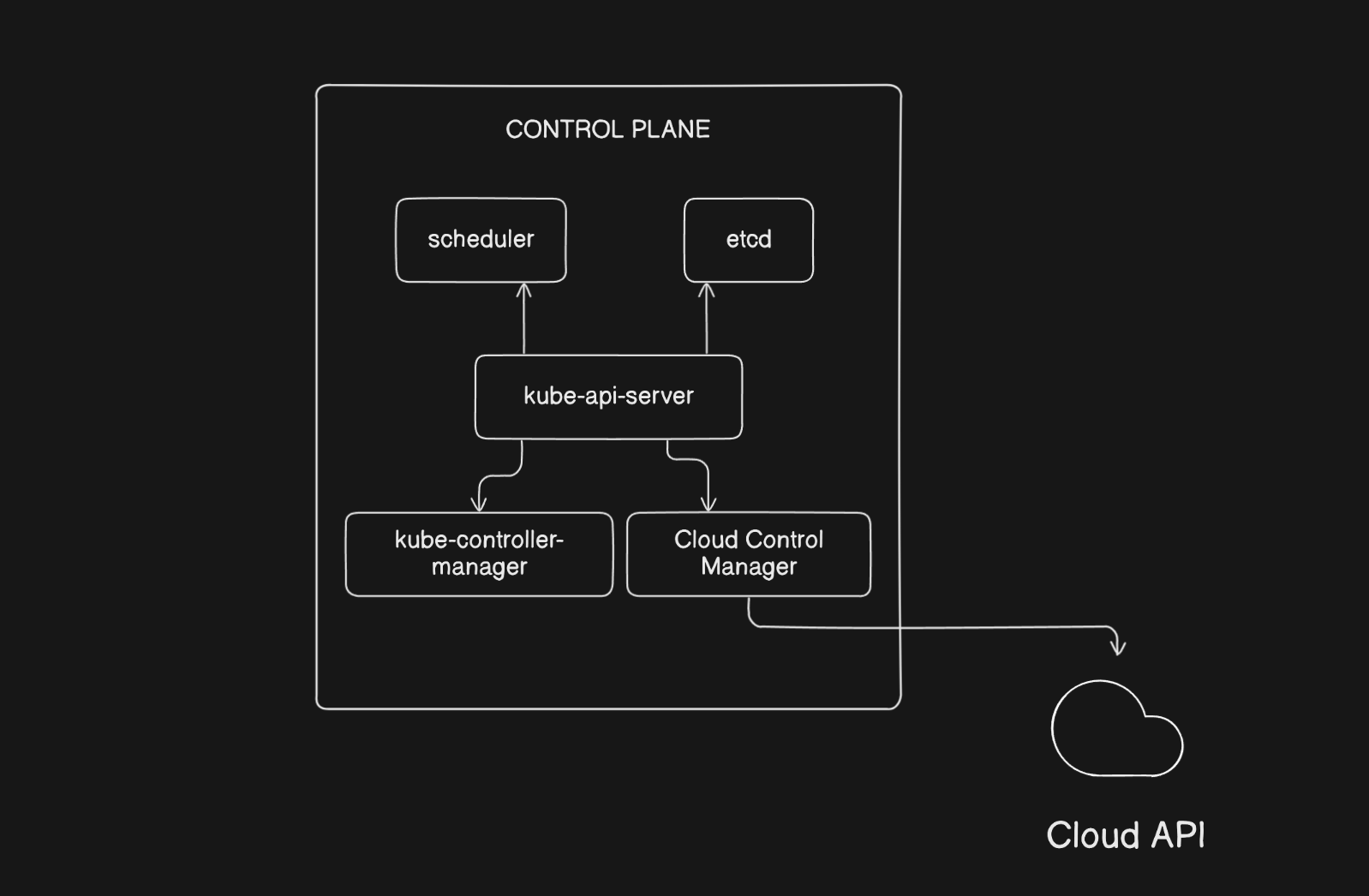Comprehensive Guide to Kubernetes (K8s)
 Kanav Gathe
Kanav Gathe
1. What is Kubernetes?
Kubernetes, often abbreviated as K8s, is an open-source container orchestration platform that was originally developed by Google and is now maintained by the Cloud Native Computing Foundation (CNCF). The name "Kubernetes" comes from Greek, meaning "helmsman" or "pilot," reflecting its role in steering and managing containerized applications.
The abbreviation "K8s" follows a common numeronym pattern where 8 represents the number of letters between 'K' and 's' in "Kubernetes" (K + ubernete + s = K8s). This shorthand has become the standard way to refer to Kubernetes in technical discussions and documentation.
At its core, Kubernetes serves as an automated system for:
Deploying containerized applications
Scaling these applications up or down based on demand
Managing the entire lifecycle of containerized applications
Ensuring high availability and reliability of applications
Orchestrating storage systems
Handling network traffic
Managing security and access control
2. Benefits of Using Kubernetes
2.1 Container Orchestration
Automated container placement: Intelligently places containers based on resource requirements and constraints
Self-healing capabilities: Automatically replaces and reschedules containers from failed nodes
Horizontal scaling: Scales applications up or down with simple commands or automatically based on CPU or custom metrics
2.2 Application Deployment
Rolling updates: Performs updates gradually while monitoring health
Automated rollbacks: Reverts to previous versions if issues are detected
Canary deployments: Tests new versions with limited user exposure
Blue-green deployments: Enables zero-downtime updates
2.3 Storage Management
Persistent storage: Manages storage volumes that persist beyond container lifecycles
Storage orchestration: Automatically mounts storage systems of choice
Dynamic volume provisioning: Creates storage volumes on-demand
2.4 Network Management
Service discovery: Automatically detects services and manages endpoints
Load balancing: Distributes network traffic for optimal performance
External access: Manages external access to applications with various strategies
2.5 Configuration Management
ConfigMaps: Manages configuration data separately from application code
Secrets: Handles sensitive information securely
Environment variables: Manages application configuration across environments
3. Kubernetes Architecture

Technical Definition:
Kubernetes architecture follows a master-worker (control plane-node) pattern implementing a distributed system that's highly available and scalable. It utilizes a declarative API system to maintain the desired state of containerized applications across multiple nodes while ensuring optimal resource utilization and high availability.
Simple Explanation:
Think of Kubernetes like a city:
Control Plane (City Hall)
Makes all important decisions
Keeps track of everything
Manages the whole system
Worker Nodes (City Buildings)
Where actual work happens
Runs your applications
Can have many worker nodes
Basic Components:
Container Runtime (like Docker)
Networking
Storage System
4. Control Plane
Technical Definition:
The Control Plane is the orchestration layer of Kubernetes that manages the state of the cluster through various controller processes. It implements the cluster's control loops, responding to changes in the cluster and working to make the actual state match the desired state. The Control Plane consists of distributed components that collectively make decisions about the cluster and detect and respond to cluster events.
Simple Explanation:
The Control Plane is like the brain of Kubernetes. It has four main parts:
API Server: The front desk - handles all communication
Scheduler: The planner - decides where to run things
Controller Manager: The supervisor - makes sure everything runs as planned
etcd: The notebook - stores all important information

5. Kubectl vs Kubelet
Technical Definition:
Kubectl is a command-line interface (CLI) tool that communicates with the Kubernetes API server through RESTful APIs to manage cluster resources. It implements client-side logic for common operations and supports multiple authentication methods.
Kubelet is a node agent that runs on each node in the cluster. It ensures that containers are running in a Pod by taking a set of PodSpecs provided through various mechanisms and ensuring that the containers described in those PodSpecs are running and healthy.
Simple Explanation:
Imagine running a restaurant:
Kubectl is like the ordering system:
Used by managers (you) to give commands
Runs on your computer
Tells the system what to do
Kubelet is like the kitchen staff:
Runs on each worker node
Actually does the work
Makes sure containers are running properly
6. API Server
Technical Definition:
The Kubernetes API server is a component of the Kubernetes control plane that exposes the Kubernetes API. It is the front-end for the Kubernetes control plane, processing RESTful API requests, validating them, and updating the corresponding objects in etcd. It serves as the primary management point for the entire cluster.
Simple Explanation:
Think of the API Server as a receptionist:
Takes all requests
Makes sure they're valid
Passes them to the right component
Keeps track of what's happening
Key Functions:
Central communication hub
Authentication and authorization
Resource validation
State maintenance
7. Basic Setup Commands and Docker Differences
7.1 Basic Kubernetes Commands
# Cluster Management
kubectl cluster-info
kubectl get nodes
kubectl get pods --all-namespaces
# Deployment Management
kubectl create deployment nginx --image=nginx
kubectl expose deployment nginx --port=80
kubectl scale deployment nginx --replicas=3
# Pod Management
kubectl get pods
kubectl describe pod [pod-name]
kubectl logs [pod-name]
7.2 Key Differences from Docker
Orchestration Level:
Docker: Single host container management
Kubernetes: Multi-host container orchestration
Scaling:
Docker: Manual or basic Docker Swarm
Kubernetes: Advanced automatic scaling
Networking:
Docker: Basic container networking
Kubernetes: Advanced overlay networking
Storage:
Docker: Basic volume management
Kubernetes: Dynamic storage provisioning
8. Minikube Overview
Minikube is a lightweight Kubernetes implementation that creates a VM on your local machine and deploys a simple cluster containing only one node. It's designed for:
Local development
Testing
Learning Kubernetes
CI environments
Key Features:
Single-node Kubernetes cluster
Cross-platform support
Multiple container runtimes
AddOns support
GPU support
Multiple Kubernetes versions
9. Installation Guide
9.1 Linux Installation
# Install required packages
sudo apt-get update
sudo apt-get install virtualbox
# Download Minikube
curl -LO https://storage.googleapis.com/minikube/releases/latest/minikube-linux-amd64
sudo install minikube-linux-amd64 /usr/local/bin/minikube
# Install kubectl
curl -LO "https://dl.k8s.io/release/$(curl -L -s https://dl.k8s.io/release/stable.txt)/bin/linux/amd64/kubectl"
sudo install kubectl /usr/local/bin/kubectl
# Start Minikube
minikube start
9.2 Windows Installation
Prerequisites:
Install Windows Subsystem for Linux 2 (WSL2)
Install Docker Desktop
Enable Hyper-V or install VirtualBox
Installation Steps:
# Using Chocolatey
choco install minikube
choco install kubernetes-cli
# Or download installer:
New-Item -Path 'c:\' -Name 'minikube' -ItemType Directory
Invoke-WebRequest -OutFile 'c:\minikube\minikube.exe' -Uri 'https://github.com/kubernetes/minikube/releases/latest/download/minikube-windows-amd64.exe'
# Add to PATH
$oldPath = [Environment]::GetEnvironmentVariable('Path', [EnvironmentVariableTarget]::Machine)
$newPath = $oldPath + ';c:\minikube\'
[Environment]::SetEnvironmentVariable('Path', $newPath, [EnvironmentVariableTarget]::Machine)
# Start Minikube
minikube start
- Verification:
minikube status
kubectl get nodes
Subscribe to my newsletter
Read articles from Kanav Gathe directly inside your inbox. Subscribe to the newsletter, and don't miss out.
Written by
